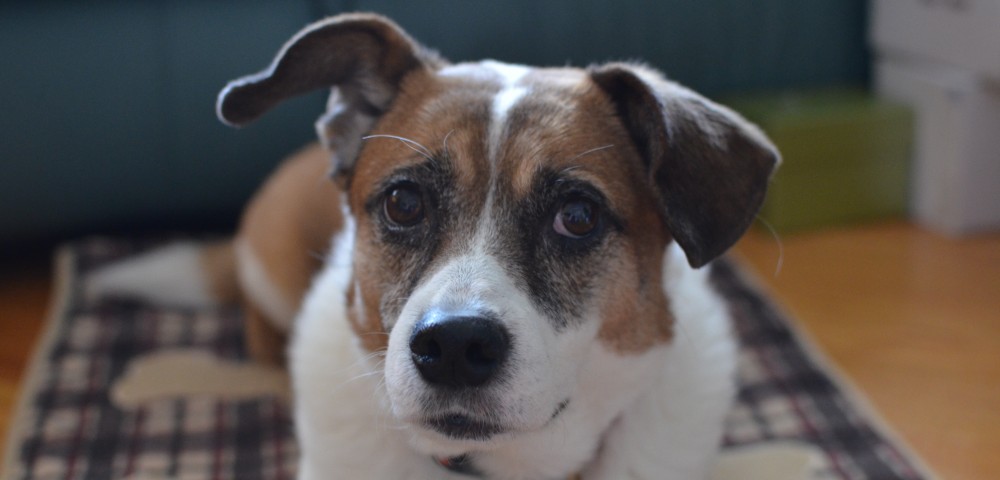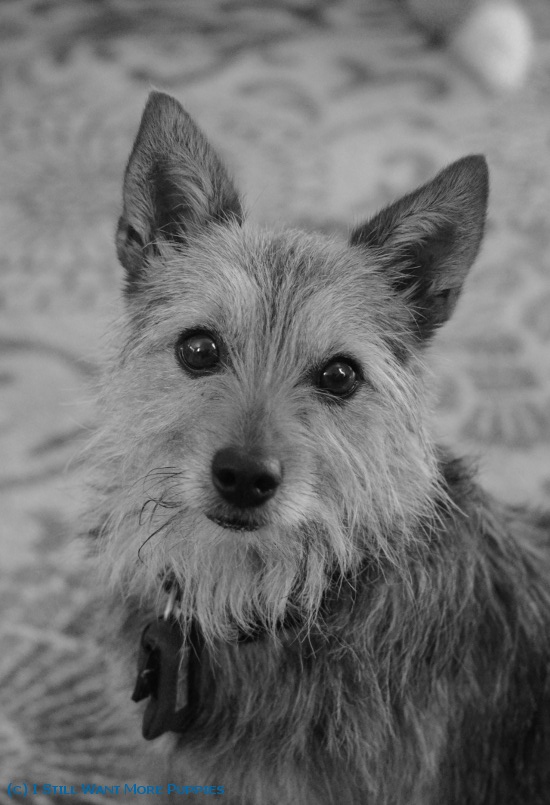I’ve been on vacation for the past week… although I managed to schedule a few posts during my absence, I didn’t have a chance to get this week’s No Frown Friday together. I hope you’ll forgive me – instead, today I’ll share a few photos from my vacation so that you can see what I was up to. Continue reading
Category Archives: photography
Sneaky snuggle time
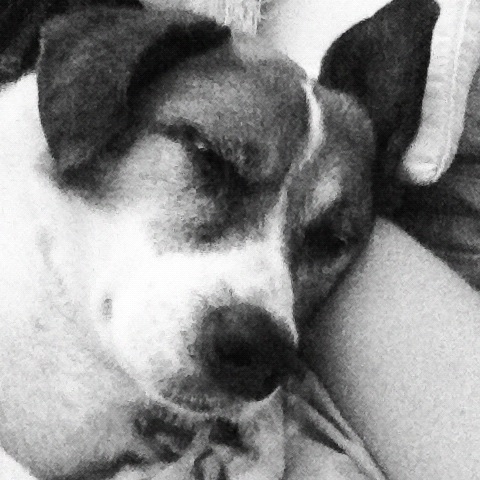 I took this one using my iPhone (Instagram with the black & white filter). Tavish was downstairs with the Hub, so I took the opportunity to sneak Bella up on the bed for some snuggle time. Obviously, I wasn’t going to disturb her to go get the DSLR!
I took this one using my iPhone (Instagram with the black & white filter). Tavish was downstairs with the Hub, so I took the opportunity to sneak Bella up on the bed for some snuggle time. Obviously, I wasn’t going to disturb her to go get the DSLR!
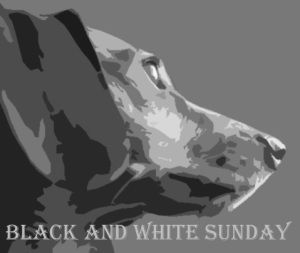
Digging the black & white vibe we’ve got going on today? It’s part of the Black & White Sunday blog hop hosted by You Did What With Your Weiner, My Life in Blog Years, and Dachshund Nola. Stop by one of those blogs to link up and join the fun!
Monochromatic mutts
Loving the black & white vibe we’ve got going on today? It’s part of the Black & White Sunday blog hop hosted by You Did What With Your Weiner, My Life in Blog Years, and Dachshund Nola. Check out the list below for more photos…

Blog the Change for Animals: Helping pets through photography
 For this edition of Blog the Change, I decided to write about a subject that’s near and dear to my heart – shelter pet photography. I’ve written about this subject often over the past few months, but I feel like it’s a message that just can’t be shared enough. Better photos help shelter pets find homes… period.
For this edition of Blog the Change, I decided to write about a subject that’s near and dear to my heart – shelter pet photography. I’ve written about this subject often over the past few months, but I feel like it’s a message that just can’t be shared enough. Better photos help shelter pets find homes… period.
Today, I want to tell you about a nonprofit called Second Chance Photos. This great organization aims to help shelter pets through photography by encouraging people to donate their time to take personalized photos of animals in need of a forever home. The founder, professional photographer Seth Casteel, does more than just encourage – he even teaches workshops to help aspiring shelter pet photographers get started. I attended one, and it was great!
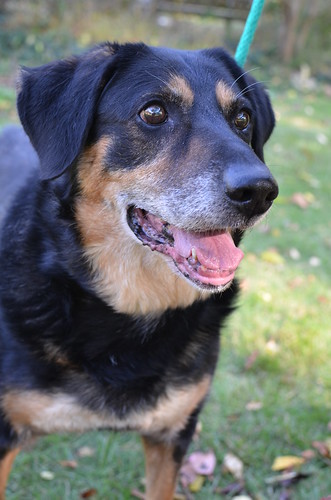 |
| Shameless plug – adopt Ernie! |
The right photo really can make a difference – check out some of these before and after photos and see for yourself.
Do you have a camera and love to take photos of your own pet? Turn that hobby into a volunteer opportunity! I contacted several local shelters, and ended up going to take photos for one of them in the fall. (Don’t be discouraged if it takes a little while to get your foot in the door or find a shelter who is interested in your services – I’m heading back to the shelter soon for general volunteer training, and hope to take more photos for them soon.)
I’ve rounded up some info to help you get started. Check out the links below:
- The Second Chance Photos website, which includes tips for getting started and a wealth of other information.
- A list of upcoming Second Chance Photos workshops – maybe there’s one in your area! (If you’re wondering what it’s like to attend a workshop and interested in some tips, you can read my recap here.)
- Even if there’s not a workshop near you, don’t worry! Here’s a PDF full of tips from Second Chance Photos to get you started. It covers everything from approaching shelters to taking photos and beyond.
- For more info, you can keep up with Second Chance Photos on Facebook and Twitter.
- Here are some more inspiring photos – don’t you just want to adopt them all?
- I recently interviewed Seth Casteel of Second Chance Photos – to learn how he got started and pick up a few tips, click here (Part I) and here (Part II).
Have you ever taken photos for a shelter before? Are you considering giving it a try? Go for it – you’ll be glad you did!
I encourage you to visit the other great blogs participating in this event today- so many fantastic causes being highlighted. Check out the list after the jump!
Interview with Seth Casteel from Second Chance Photos: Part II
I’m so excited to bring you the second installment of my interview with Seth Casteel, the founder of Second Chance Photos. Through this nonprofit, Seth aims to help shelter pets find homes through photography. In today’s installment, Seth talks about lighting, his favorite moment as a pet photographer, and how you can save lives using your camera.
If you haven’t read Part I yet, I recommend you click here and check it out before diving into Part II. Read on for the rest of Part II…
It’s amazing what a difference the right photo can make – you can see it for yourself in the before and after photos on the Second Chance Photos website. When a potential adopter sees a photo of a shelter pet, we want them to start visualizing the relationship that they could have. As Pamela from Something Wagging astutely pointed out in the (very thoughtful) comments last week, it’s all about emotion. Don’t be intimidated by the technical side of photography – as Seth points out, you don’t have to be a professional to donate your time and skills to help shelter pets this way.
Let’s talk about lighting. What lighting is best? How do you deal with situations where the lighting is not ideal?
A very simple question with a complicated answer. My best advice about lighting is to experiment by shooting many photos in many different lighting scenarios. For classic portraits, I prefer cloudy days or the shade though.
Some of my readers asked about videos vs. photos. Do you think videos of shelter pets are useful?
Absolutely. Any positive images, either photo or video, help increase the chances of adoption.
What was your all-time favorite shoot?
Not a fair question!! 🙂 I have enjoyed every single photo shoot I have done for different reasons. If I have to pick at this very second, I would say an Afghan Hound I met in New York City by chance while waiting for another client. I met this dog for only 3 minutes and did a quick series of photos of him. One of these resulting photos has become one of my favorites because it showcases an expression that I can’t seem to figure out. This is what I love about dogs. They have such an amazing range of emotions and expressions, and in a lot of ways, are just like people. This is why we relate to them and this is why I have dedicated my life to them.
What has been your most rewarding or most memorable experience photographing shelter pets?
To know the work is making a difference. I feel very fortunate to have the opportunity to help. Not only are photos saving lives, but they are helping to change the image of “shelter pets”, revealing to people that they are wonderful pets and make loving additions to your family.
If you could offer one piece of advice to someone who would like to start volunteering as a shelter pet photographer, what would it be?
The work you do will save lives. It may not always be easy, but shelter pets need your help. Be patient. Be dedicated. Shelter pets do not have a voice, but you can give them one.
A bit off topic, but I always like to end with a pop culture question. What’s your favorite TV show?
I don’t watch much TV, but I would say DEAL or NO DEAL! It’s just so exciting!! No deal!!!! 🙂
Thanks again to Seth for answering my questions!
If you have any additional questions for Seth, please share them in the comments. I’ll pass them along and see if he is available to answer them. Has Seth inspired you to get involved?
Interview with Seth Casteel from Second Chance Photos: Part I
As you may remember, last month I attended a fantastic workshop by Seth Casteel, the founder of Second Chance Photos. Second Chance Photos is a non-profit that is dedicated to helping shelter pets find homes through photography. A good photograph can make the difference in the life of a homeless animal – better photos help animals find homes.
After the workshop, I emailed Seth to see if he’d be willing to do an interview for my blog. He graciously agreed.
Below, you’ll find Part I of our email interview, which included a few questions from me as well as some from you. Today, learn about how Seth got started as a photographer, how he started working with shelter pets, and some practical tips. I’ll be sharing Part II of the interview next week.
How did you get started as a pet photographer?
I’ve always loved animals and photography, but two things in my life launched this new career path. I adopted a dog from the local shelter and started taking snapshots of her for fun. I really enjoyed the unique challenge of working with dogs as well as the rewards of capturing a special moment – a glimpse of her personality. About the same time, I heard about some kittens that were found on the movie studio lot where I worked. The kittens needed to find forever homes so I volunteered to photograph them to help catch the attention of potential adopters. All of the kittens found homes. From there, I began volunteering at the local shelter. Then landed a private client. Landed a magazine cover from that first private client shoot. And then wheeeeeeeeeeeee.
How did that work lead you to taking photos of shelter pets?
Shelter pets started it all. When I first started volunteering, I didn’t realize pet photography would become my career though. It was a nice surprise!
What is the biggest difference you find between shooting rescue and non-rescue dogs? Have you found that certain types of dogs are easier to photograph?
Zero difference. I’ve worked with thousands of dogs – a wide range of breeds, ages, backgrounds and personality-types. Some of the most photogenic and cooperative dogs have been shelter dogs and some of the most challenging “models” have been pets with homes. You just never know. 🙂
What do you think makes a dog more photogenic?
There is a great picture for every dog – you just have to find a way to figure out what that picture is.
Do you have any tips for taking photos of “ugly” dogs or dogs that may not be quite as cute on the surface? (I admit, this one’s not from me – I have puppy blindness and think all dogs are cute.)
Both photography and the appearance of dogs are subjective – so it really depends on who is viewing the photos. The key to any good dog photograph is emotion. If you can capture emotion in a photo, no matter what the subject looks like, you’ve got a winning shot that people can relate to.
Do you have any tips for handling a photo shoot with a fearful dog?
Patience. If you try to force a photo shoot on a fearful dog, the photos are going to be negative. Try to understand what the fear is – the camera? you? the world? At some point, you may just have to put on a long lens and hide in the bushes. 🙂
It’s both refreshing and inspiring to talk to Seth… I can’t wait to share Part II of the interview with you next week! Stay tuned (and if you have any additional questions for Seth, please feel free to share them in the comments).
Oh, and don’t mind Bella… she thinks she’s some sort of hotshot reporter now that we’ve scored this interview.
A paw in the hand is worth two in the grass
Please excuse the tortured saying in today’s post title. I wanted to share a few photos I shot as part of the Daily Dog Challenge group on Flickr (created by our pals at Tales and Tails and BZ Training), and my brain apparently decided to stop working properly.
Anyway, the Daily Dog Challenge is pretty fun… there are daily prompts that encourage you to take photos of your furry friend. It’s a great way to get your creative juices flowing while working on your photography skills. (After all, practice makes perfect).
For example, I took the photo below in response to this prompt: “Take a photo today that shows a paw in a hand.”
| View on Flickr |
Bella doesn’t really like when people mess with her paws… so I took a rather liberal interpretation of the “hand” part of things. Want to see what other photographers did with this prompt? Check it out!
Another recent prompt was: “How does your dog react to his reflection? Show us today with a photo!” I submitted the shot below:
| View on Flickr |
There were a lot of great photos submitted for this one.
As you can tell, I’ve been experimenting with the mood of my photos lately – these photos were taken with customized settings to create an amber glow. (Camera settings – and great Nikon D7000 user’s guide – courtesy of Ken Rockwell. If you want to learn more about photography, check out Mr. Rockwell’s site – you’ll find user’s guides for a variety of cameras as well as some fantastic tips.)
For good measure, here’s one shot outside with a different feel, shot in response to the prompt: “Around the world, the seasons are different. Take a picture today that shows us what it’s like in your corner of the world!”
| View on Flickr |
You can see the other photos submitted in response to this prompt here.
Feel free to check out my other submissions here, or visit the group pool to see what others have submitted. I don’t manage to keep up with every challenge, but I really enjoy it!
Sounds like fun right? If you’re interested in joining the Daily Dog Challenge, go here to learn more.
Lessons from the Second Chance Photos workshop
You may remember my earlier post about Second Chance Photos, a non-profit that encourages people to donate their time to take personalized photos of animals in need of a forever home. (Check out these amazing before and after photos… you’ll be a convert, I promise.)
| Watching Seth… |
Have you considered taking photos of shelter pets but weren’t sure where to start? You’re in luck. Last week, photographer Seth Casteel (the founder of Second Chance Photos) did a workshop at the Washington Humane Society (WHS) here in D.C. I was able to attend, and I have plenty of tips to share with you.
The workshop took place on Wednesday afternoon at the Washington Humane Society’s New York Avenue location. I had already taken the day off from work to prepare for Thanksgiving… when I learned that Seth would be in town and would be conducting a workshop, I was thrilled!
As I hopped in the car that day, I was a tad concerned about the weather. Although the temperatures reached the low 70s over the weekend, Wednesday was a cold and windy day. I even felt some sprinkles, but nothing was keeping me from that workshop. After dealing with standard D.C. traffic, I arrived at the shelter. I knew I was in the right place when I spotted the gaggle of eager photographers waiting inside. Seth joined us, and our workshop began.
I learned far too much to share in one blog post (I’m wordy enough as it is), but I wanted to share a few highlights. (To see some of the photos I took, click here.)
Before the photo session began, Seth did a brief introduction and told us a little bit about his approach to photographing shelter pets. In a nutshell, Seth is a big believer in positive photos. You won’t find any sad, depressing photographs designed to inspire crushing guilt and depression. Instead, Seth aims to take photos that are happy, warm, and welcoming. (I have a feeling Edie from Will My Dog Hate Me – the queen of uplifting adoption videos – would approve of that approach as well. I will admit that I was dying to make a joke about Sarah McLachlan.)
NO PHOTOGRAPHER IS AN ISLAND
I want to stress the importance of teamwork here. At a minimum, you’ll want to have a duo on photo duty – it’s important to have a helper/handler working with the dog while the photographer snaps away. Photographing dogs is not the
sort of activity that lends itself to being solitary. In fact, Seth
noted that three people would be even better. If possible, have a third person responsible for bringing dogs to and from the shooting area – this will minimize waiting time (because you can start shooting the next dog while this person takes the dog you just finished working with back to the kennel) and allow you to photograph more dogs while you’re there. (If I recall correctly, Seth mentioned he could photograph 30 dogs in a few hours – I need to pick up the pace!)
TIPTOE THROUGH THE TULIPS
So, you’ve got your team (be it a duo or a trio) – now what? You’ll need to find a location to take photos. Fortunately, WHS has a nice outdoor area that we were able to use. (No tulips, but I couldn’t get the song out of my head once I thought of it. Seth recommended including some natural elements in your photographs if possible.) There was even bamboo growing in one corner, which provided some greenery to work with. However, if there’s no space like that available at your shelter, scout around… you can probably find a space that will be better than just taking photos in the kennel.
LOOK AT ME
| Not my best… but, that face! |
Once you’ve gotten the logistics (personnel, location, etc.) figured out, then it’s time to actually take some photos! You’ll probably want to take some time to get acquainted with your canine model – the dog may be fidgety or excited and may need some time to relax.
After the pup feels comfortable, how do you get him to look at you? Seth recommended bringing along some treats (checking on each animal’s dietary restrictions, of course) and the squeaker from a squeaky toy (apparently you can order these on Amazon… or, if you live with Bella, she’ll happily remove these from all of her toys for you).
Seth photographed four dogs and walked us through his process. It was really educational – seeing him in action made it easier to envision applying these tips in my own life. (In fact, I employed several on Saturday while taking photos of Bella for our Christmas card.)
TRICKS OF THE TRADE
In addition to the basics I discussed above, Seth shared a plethora of other tips. I wish I could remember them all right now, but I was too busy listening and snapping photos to write everything down. Here’s what really stuck with me:
- Continuous shots are your friend. Set your camera to take multiple photos with each click – this setting will increase your chances of capturing that perfect moment.
- Don’t try to photograph a dog in direct sunlight – the sun right in his face will just make him squint. If possible, use indirect light or position the dog with the sun behind him.
- Resist the urge to use the flash – avoid the dreaded green eye!
- Try to get a nice close-up shot (looking into the camera with a happy face is what we’re hoping for here). While full-body shots are great too, it’s important to get that close-up.
- If the dog looks sad or unhappy, it might be a good idea to let the dog play or run around for a bit if you can. The panting face that follows will likely translate as a happy one in your photographs.
- Embrace Photoshop (or the photo editing software of your choice). Sometimes a few tweaks can take a photo from good to amazing.
- Cats are sometimes a tougher assignment – you may want to experiment to see what works for you here. Consider location, lighting, and trying to highlight each feline’s unique features. (We spent some time in Kitty City as well – I need a lot more practice on that front.)
You can find many more tips on the Second Chance Photos website, including information about equipment, photo shoots, and – most importantly – how to get started. If you’re interested, there’s also information on upcoming workshops (including Chicago in December and Phoenix in February).
(While you’re clicking around, pop over to WHS and check out the adoptable animals… perhaps one of them is perfect for you?)
Have you ever taken photos of shelter pets? If not, are you considering giving it a try? Also, if your friendly neighborhood blogger had the chance to interview Seth, what questions would you want her to ask? (Hint, hint… help me out here!)
Shelter employee fired for taking non-crappy photos of dogs
 |
| Shameless plug – adopt Ernie! |
You know I’m all about the notion that better photos can help dogs get adopted. It’s logical, after all. I’m always drawn to a photo of a pup with more personality. (Speaking of personality… at right, you’ll see a photo I took when I volunteered at a local shelter last month.)
Anyway, today I’m here to share a story about something that strikes me as completely illogical. Let’s say you’re a shelter… you have a crappy camera and have some crappy photos of adoptable dogs up on your website. An employee decides to use her higher-quality DSLR to snap some photos of dogs scheduled to be euthanized and shares them in hopes of finding a rescue group or potential adopter who could save the dogs.
This woman displayed initiative, saw a problem, and took steps to improve the situation. Sounds like Employee of the Year material to me. In reality, she joined the ranks of the unemployed.
According to the New York Times, Emily Tanen was fired from Animal Care and Control of New York City for taking photographs of animals scheduled to be euthanized. Why? Her photographs apparently violated her employer’s rules regarding photos – specifically, who can take photos, how the animals can be photographed, and how the photos can be used. (One rule precludes showing humans in photos with the animals – apparently this extends to body parts such as a hand. Even with my limited experience, I can tell you that it’s not always possible to get a photo of a nervous dog without a human’s arm or elbow somewhere in the frame.)
Emily took some lovely photos of the dogs that put the official shelter photos to shame. It sounds like those photos helped some animals escape death row. Instead of seeing the potential here, the shelter fired her. (Another former volunteer has also expressed displeasure with the fact that the shelter wanted to tightly control any of the photographs he took instead of allowing him to post them on his Facebook page. Since when is wider exposure for an animal in need of a home a bad thing?)
Don’t get me wrong – I realize that not all shelters have the time or resources to devote to getting some truly fantastic photographs of adoptable animals. They may not have enough volunteers to do so – in fact, the article suggests that there are only a handful of volunteers to take photos for the entire city shelter system involved here. In addition, I’m sure there are sometimes valid legal reasons that an organization like this one would want to control the use of photos or set forth standards.
However, why not try to find a middle ground? Perhaps the shelter could have taken this opportunity to revisit its policies and come up with a plan for getting photos of the animals that would both be acceptable to the shelter and would increase the animals’ chances of adoption. (Similarly, in the case of the other volunteer I mentioned above, perhaps agreeing to a reasonable way that the photos could be circulated while noting that he did not officially represent the shelter would have been an option.)
This story isn’t about a lack of resources – you have an employee who is willing and able to help take better photos of the animals. Perhaps she violated the policy, but wouldn’t a reprimand would have made more sense than firing her?
You can read the full New York Times article here.
UPDATE 11/15/11: There appears to be an online petition circulating to get Emily her job back. If you’d like to learn more, click here.
Say "cheese… and adopt me please!"
Last month, I read a post on Jezebel entitled “Pet Photographer Says Better Photos Save Shelter Dogs’ Lives.” Not long after that, I read another article on FIDO Friendly on the same topic. Through the FIDO Friendly article, I learned about Second Chance Photos, a non-profit that encourages people to donate their time to take personalized photos of animals in need of a forever home.
I was intrigued – the idea makes perfect sense. The cuter that furry face looks in the photo on the rescue group or shelter website, the more likely someone looking for a pet is going to fall in love. Not convinced? Check out some of these before and after photos.
As someone who’s obsessed with her camera, I couldn’t think of a better way to volunteer! Inspired by Second Chance Photos, I contacted some local rescue groups to see if they could use my services. One group, Friends of Homeless Animals (FOHA), took me up on the offer. FOHA is a non-profit, no-kill shelter that operates in the DC/Northern Virginia area. (Remember Dozer? He’s a FOHA alumnus.) According to its website, FOHA typically houses more than 100 dogs and 30 cats on site (as well as more in foster homes). As you can imagine, that’s a lot of animals that need photos for the website!
This weekend, I visited FOHA to take photos of some of their adoptable pets. I’m so glad I did. A friend came along to handle the dogs while I took photos – we spent the afternoon playing with dogs and (fingers crossed) helping them find homes. It was rewarding and fun – I hope they’ll be willing to have me back.
Want to see some of the photos? Allow me to introduce you to my new friends…
If the slideshow didn’t work for you, check out the set on Flickr. For more information on these pups, visit Friends of Homeless Animals.
Interested in learning more about volunteering as a shelter pet photographer? Second Chance Photos has some great tips on how to get started, as well as tips regarding equipment, how to conduct the photo shoot, and editing.
You don’t have to be a pro – it just takes a little bit of homework and a lot of practice. It’s nice to think that all of my time playing pupperazzi has a practical application.
Have you ever taken photos for a rescue group, or are you considering doing so?
